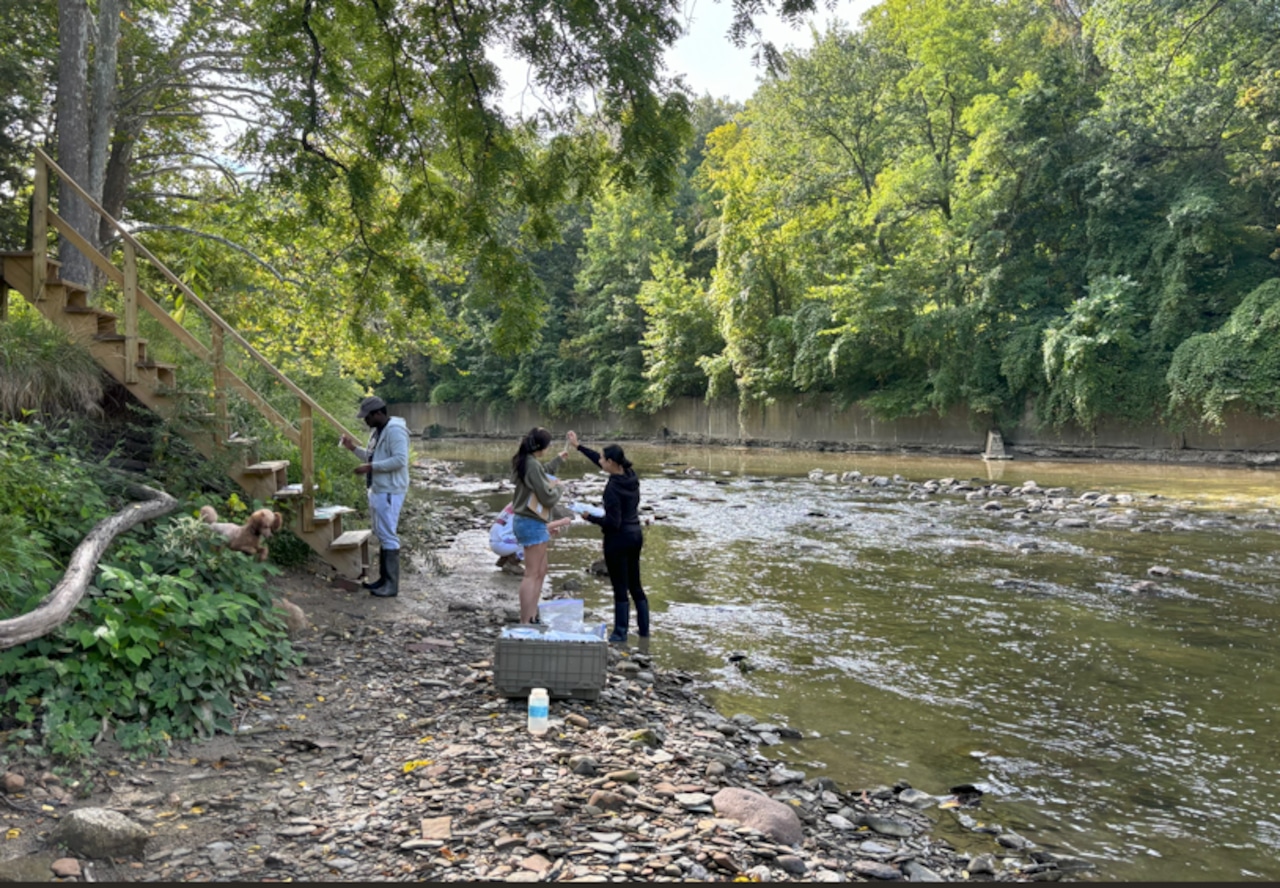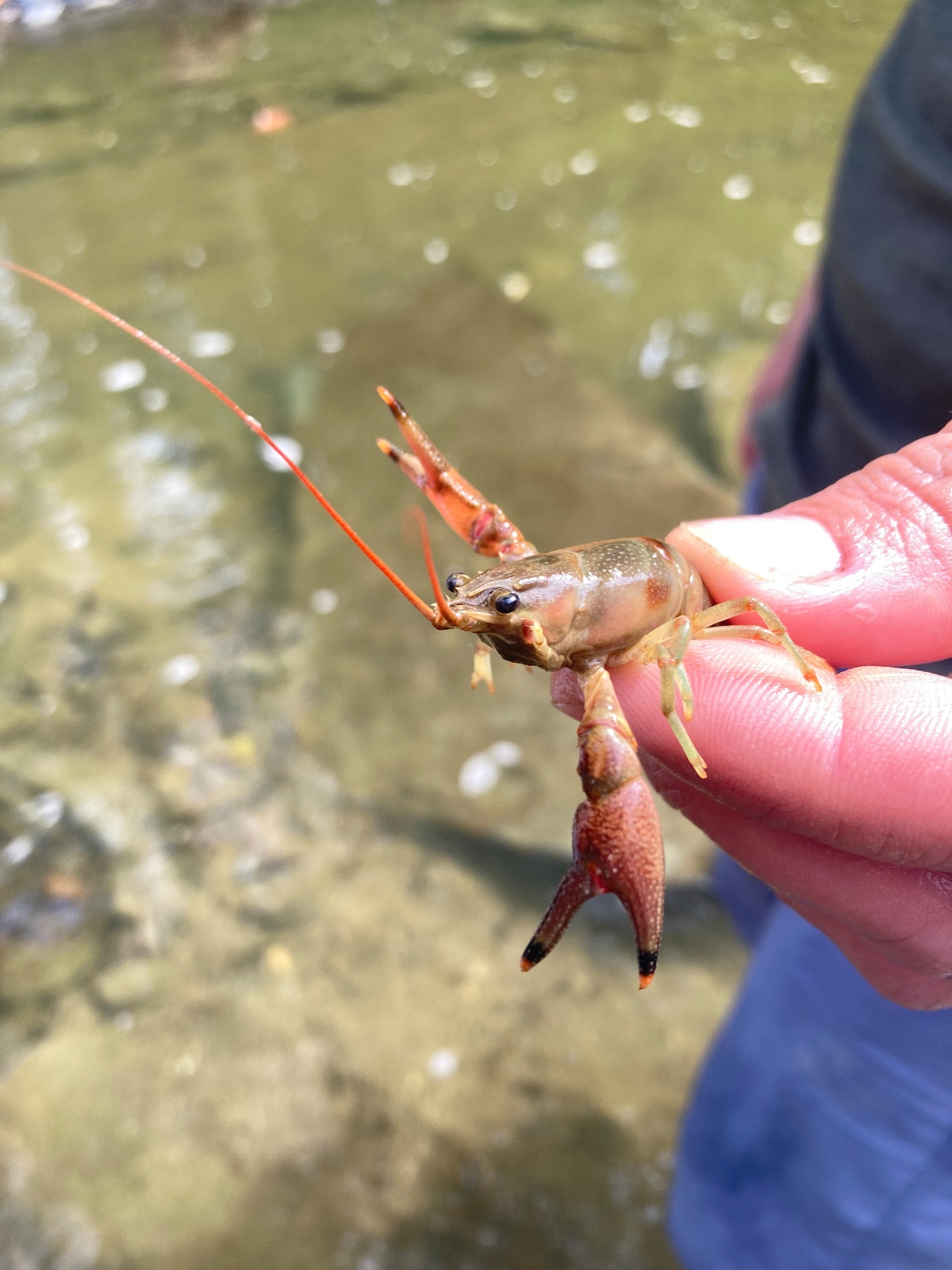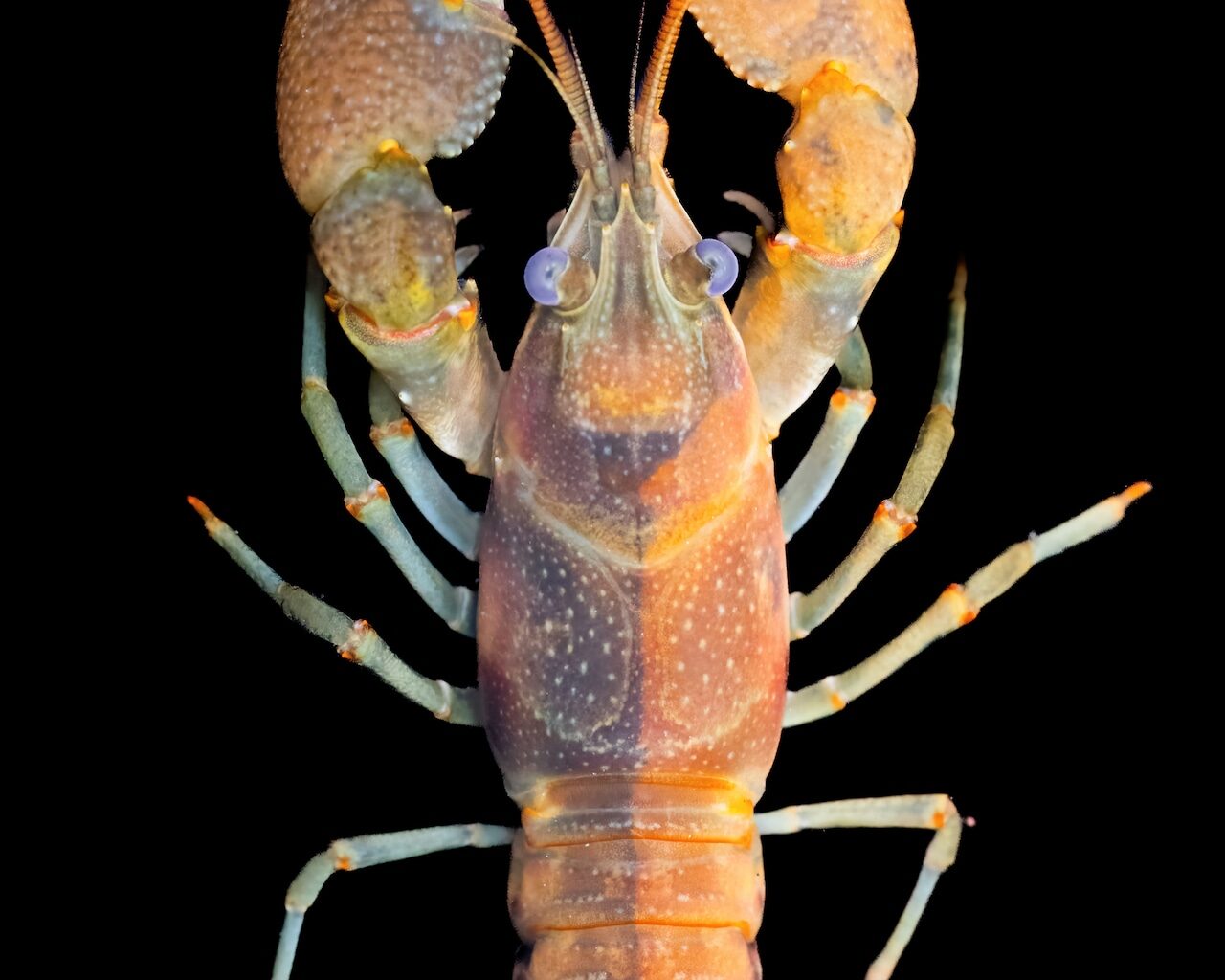CLEVELAND, Ohio – On a recent September morning, Sean Williams took his Tri-C biology class to the Chagrin River to look for invertebrates, such as crayfish, flatworms and insect larvae.
What they came across shocked Williams.
One of his students, Maykala Hooper, spotted what she believed to be a crayfish lurking in about one foot of water.
Williams went over to check it out and with the help of another student, pulled aside a rock the size of a table to expose the crustacean.
But there was something peculiar about the crayfish. One half was brown and the other half orange, with a clear demarcation down the middle.
“Out of instinct I reached down and grabbed it,” Williams said “… and I was freaking out.”
That’s because Williams knew what he had – a crayfish with a bilateral color variation, a rare mutation he had read about in lobsters and had seen with his own eyes in a bird called an American redstart.
Now he’s writing up the discovery for submission to a peer-reviewed science journal.
 Sean Williams’ Tri-C students looking for invertebrates on the Chagrin River in Willoughby Hills.Sean Williams
Sean Williams’ Tri-C students looking for invertebrates on the Chagrin River in Willoughby Hills.Sean Williams
The class couldn’t stop talking about the two-toned crayfish, which they took back to Cuyahoga Community College and placed in a tank. They named him Chris for “Chris the crayfish,” but also because Chris was gender neutral and it wasn’t known yet if he was male or female.
Chris lived a couple more weeks, long enough for Zackary Graham, an assistant biology professor and crayfish expert at West Liberty University in West Virginia, to come and see the genetic oddity for himself.
Williams had reached out to Graham, emailing him a photo, which he opened on a Sunday morning while getting coffee with his fiancée.
“And I pretty much told her I need to go up and see this crayfish in Cleveland this week,” Graham told cleveland.com and The Plain Dealer.
Graham, who grew up in suburban Pittsburgh flipping over rocks in search of tiny creatures, said he’s only aware of maybe 10 reports of this type of bi-colored crayfish in history, the first being in 1666 in Germany. All the other instances have been in the United States or Australia, where 90% of all crayfish species call home.
 A crayfish with a rare condition called bilateral color variation was found in the Chagrin River.Maykala Hooper
A crayfish with a rare condition called bilateral color variation was found in the Chagrin River.Maykala Hooper
Williams said he believes the mutation was caused by two rare occurrences, the first being a developmental anomaly where the egg cell had two nuclei instead of one. That would mean it had two sets of genes, and each was fertilized by a different sperm cell. Following that, within one of those sets of genes, a rare color mutation occurred.
Graham said that’s not the only possibility. But in general, what happened was “an error in the cell division process” sometime after fertilization.
Williams and Graham will explore the various possibilities in a science paper they hope to have published, with some of Williams’ students listed as co-authors.
By documenting the find, Williams said, science will have a “a better understanding of the developmental process of animals,” something that could ultimately benefit humans if such a phenomenon were ever found in people.
While there are higher mutation rates in places with more pollution, Williams said there’s no reason to believe anything in the environment contributed to the bizarre coloring of Chris the crayfish. He sees it as simply a matter of probability.
“Why does any given person win the lottery?” he said.
As for his students, it brought a lot of added excitement to the principles of biology class.
“It’s been like a nonstop conversation,” Hooper said.
If you purchase a product or register for an account through a link on our site, we may receive compensation. By using this site, you consent to our User Agreement and agree that your clicks, interactions, and personal information may be collected, recorded, and/or stored by us and social media and other third-party partners in accordance with our Privacy Policy.

